In our latest archive display we take a closer look at Descendants of the Dragon, 1991. This exhibition highlighted the Chinese community within Britain, looking at the importance of the dragon within celebrations. The exhibition showed many sculptural/puppet works which were related to the dragon and other animals that are present in ritual celebrations in Chinese-British culture.
Descendants of the Dragon showcased Chinese artists based in the East Midlands, as well as works from China. The majority of the space was filled with sculptural works that were used in ritual and festival settings featuring a large dragons head at its centre, and a long boat to the side. The ceiling of the gallery was covered with kites of different animals, including cranes, eagles, owls, and butterflies.
Curated by Alex Jovčić-Sas, the Archive cabinet contains photographs from the original exhibition, alongside condition drawings/reports for the main piece which sat in the centre of the gallery. There are also some of the original captions which have been written in mandarin and translated into English.
This exhibition has recently been researched by Dr Vivien Chen who was looking into diasporic East Asian artists in the East Midlands.
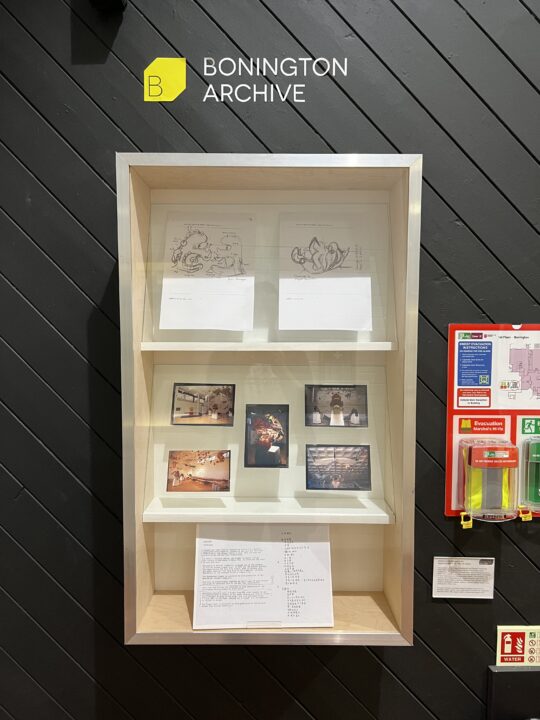
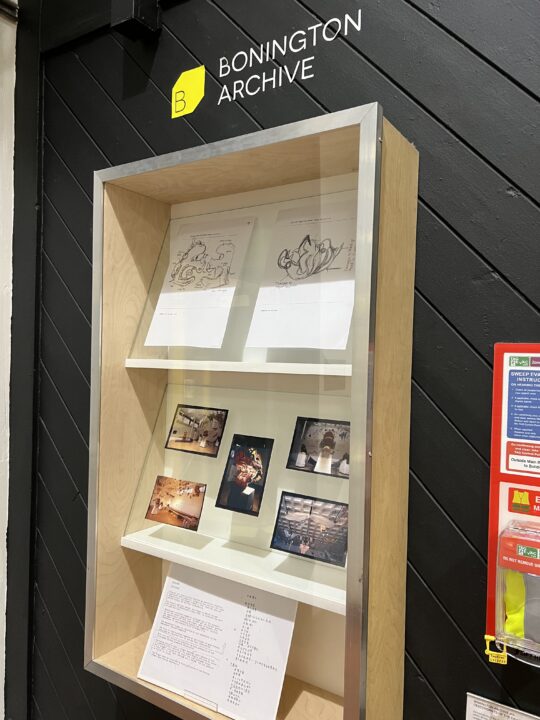
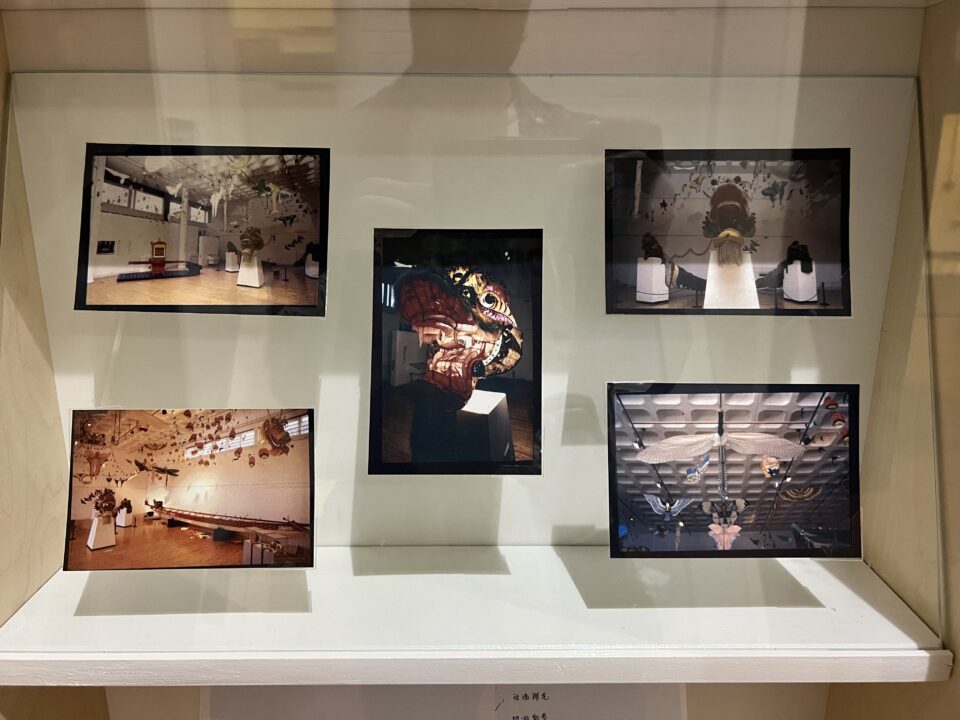
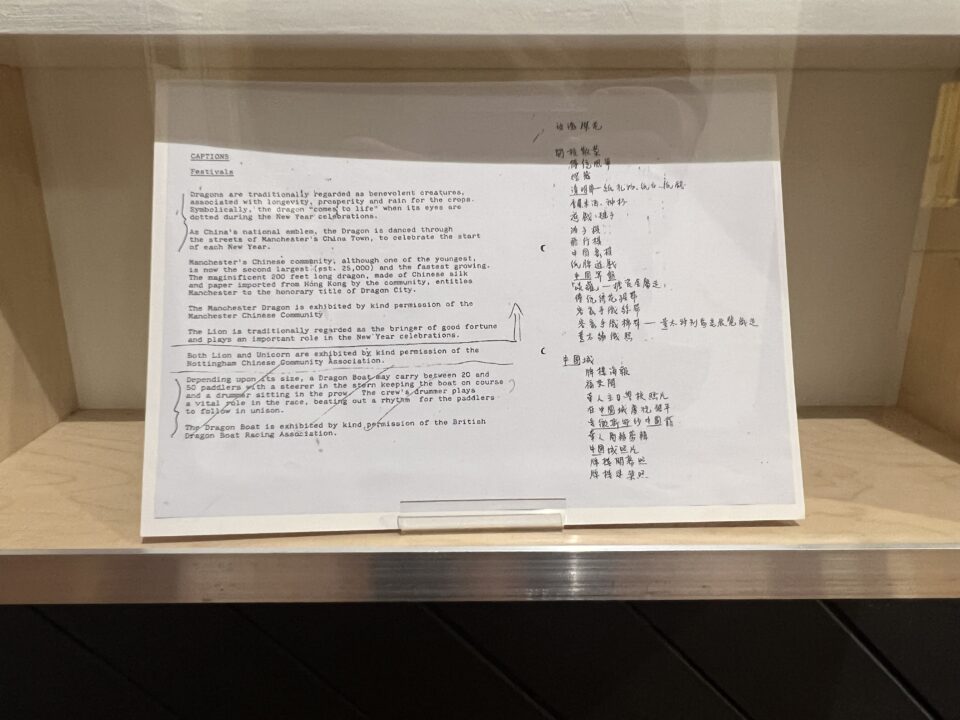
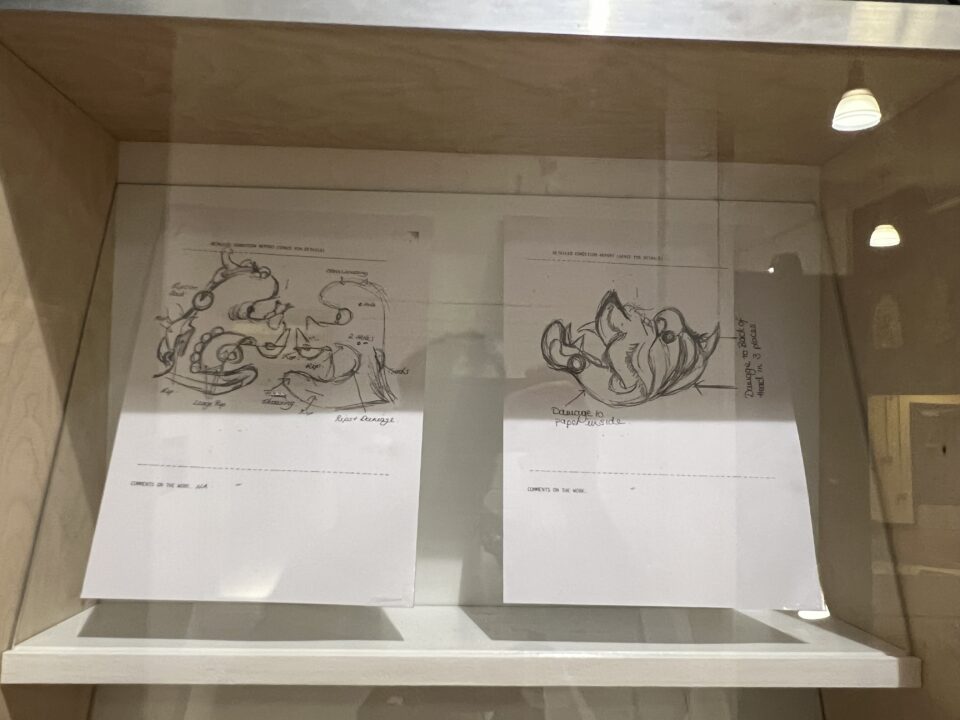
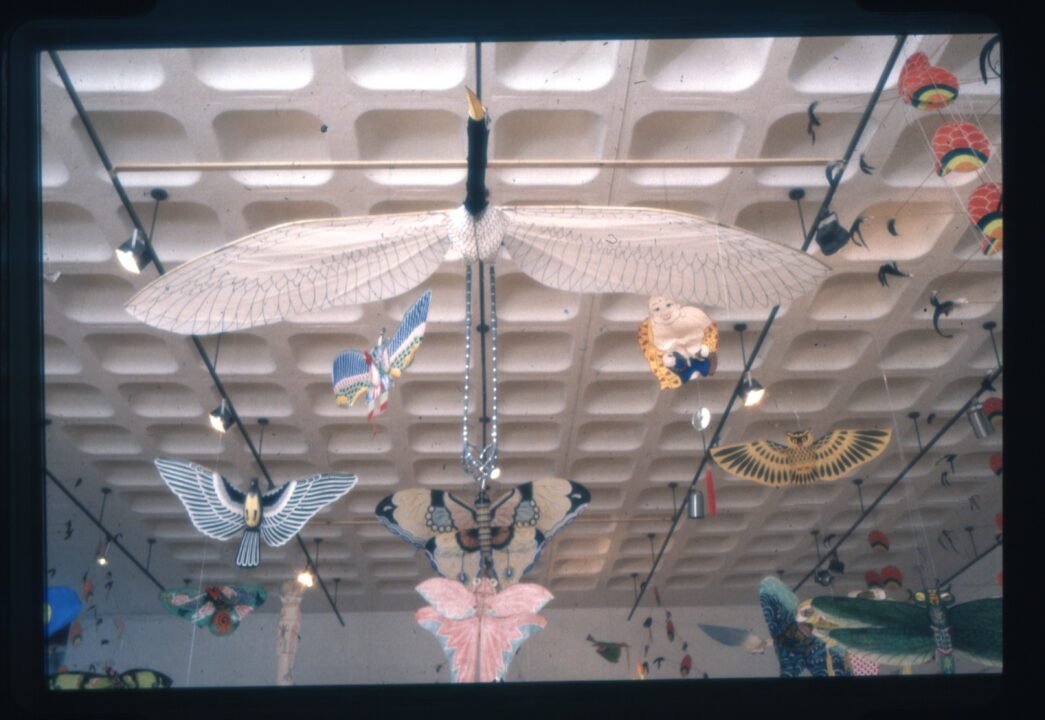
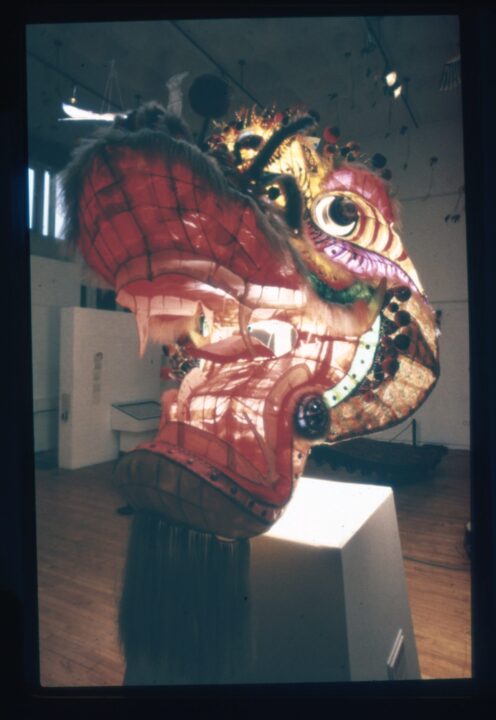
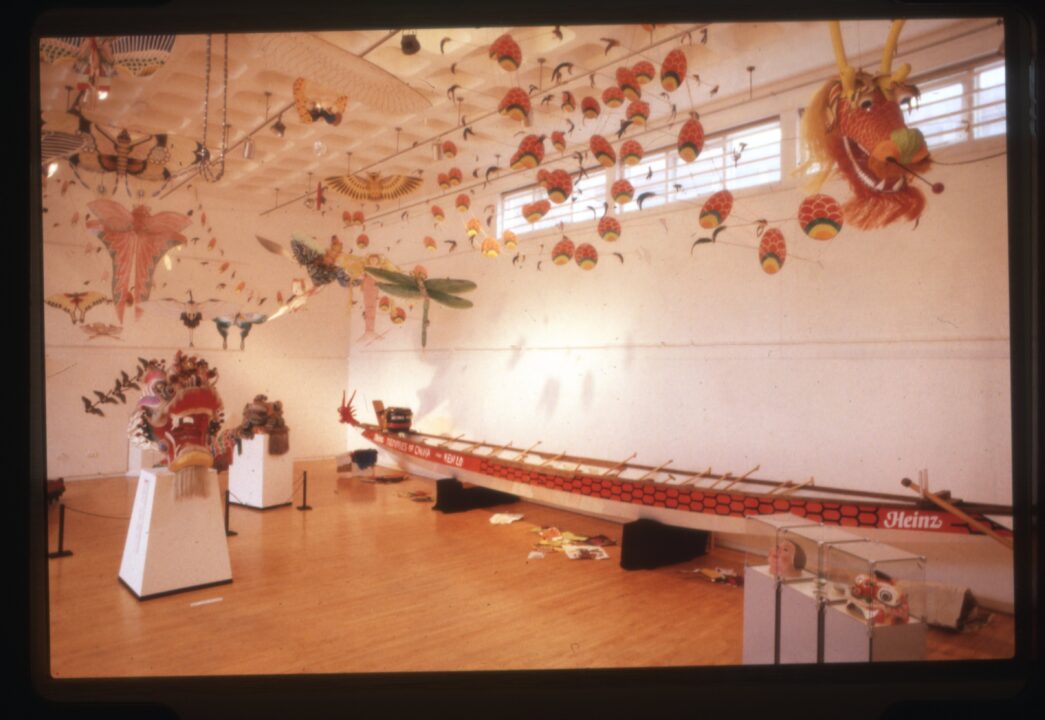
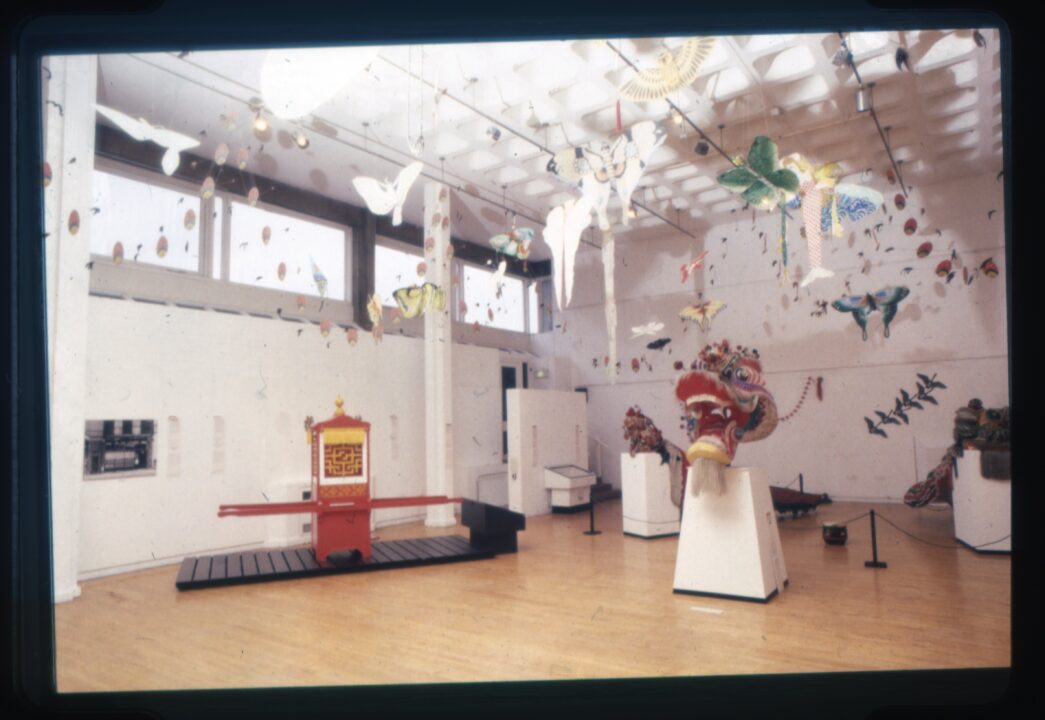
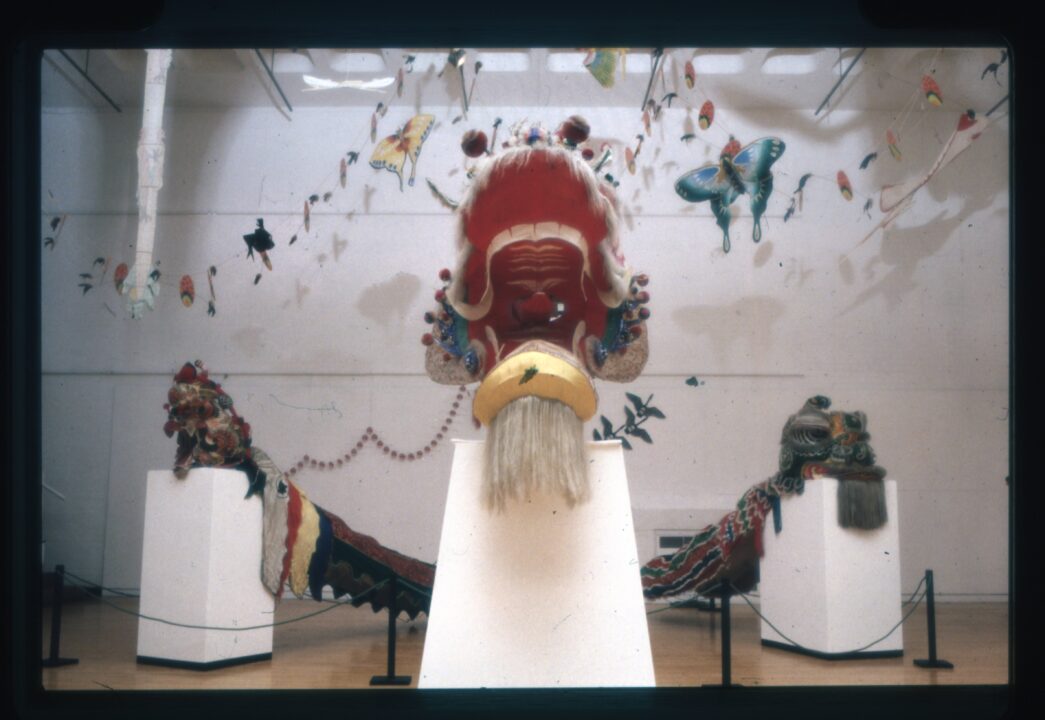
Representing Lives was a conference that took place in July 1997. The theme explored the multiplicity of women’s identities through the medium of writing biographies and autobiographies, and was funded by the English and Media Studies department at Nottingham Trent University (NTU).
Alongside the conference was an exhibition at Bonington Gallery titled Representing Lives, curated by Pauline Lucas. The exhibition showed four artists, who responded to an open-call which mirrored the themes of the conference, and showcased a mixture of sculpture, painting, photography, and fashion works. The motivation was to examine different perceptions of women in fact and fiction to create a female space within the gallery. To explore this idea, the exhibition featured Hilary Cartmel, Lubaina Himid, Sonia Lawson, and Denise Weston – a mixture of established artists and NTU graduates. Denise Weston studied alongside Donald Rodney, who is the focus of our Bonington Vitrines #25 exhibition.
In addition to the exhibition, Representing Lives was one of the first exhibitions to be documented on Bonington Gallery’s new website. The show lasted for a month in the physical space, but its legacy remained for much longer due to its online presence. In the words of exhibition organiser, Stella Couloutbanis, it was a show “enjoyed by visitors, and computer buffs!”.
On display in the Bonington Archive Cabinet (which can be found in the foyer space outside our main gallery) is the original exhibition proposal by Pauline Lucas, a call for papers for the conference, a memorandum from Stella Couloutbanis to Nick Freestone, a postcard from Pauline Lucas, and images from the original exhibition.
Curated by Alex Jovčić-Sas












Hilary Cartmel graduated from Nottingham Trent Polytechnic in 1980 with a degree in Sculpture. Hilary’s juggler series created out of her customary medium of steel, represents the chaos of modern life. ‘The Clumsy Juggler’ is an androgynous figure which suggests the turmoil of coping with the demands of children, running a busy household whilst pursuing a career.
Hilary has produced sculpture for exhibitions and has shown her work in galleries all over the UK. She has exhibited many pieces of public sculpture on the street, including Carmen which resides outside Nottingham’s Theatre Royal. Hilary has recently completed the gates to the Nottingham Fashion Centre on Convent Street and has produced 27 screens for Rotherham’s Transport Interchange as part of the Interchange’s upgrading.
Denise Weston graduated with an honours degree in Fine Art. She then took an MA in Fine Art at the former Birmingham Polytechnic. Denise currently teaches at Basford Hall College in Nottingham and is a visiting lecturer at NTU. She has exhibited across the country since graduating and is proactive in nurturing artistic talent in Nottingham, notably, by helping to co-ordinate the ‘Oldknows Gallery Exhibitions’ from 1988 – 1993.
Using images of clothing, Denise illustrates her own personal experiences of being a woman whilst escaping the direction of the female form. Flaneuse is a multimedia work which incorporates an image of Denise’s own jacket.
Denise said: “The word ‘Flaneuse’ is the female equivalent of the french word ‘Flaneur’ meaning the spectator and depictor of modern life. The work was inspired by a walk home from the studio late one evening and the realisation that there are still avenues – quite literally – which women feel they cannot explore.”
She elaborated: “I am concerned with using the process of painting as a metaphor; taking the blank canvas and ‘injecting life’ in a similar way that one gives life to inanimate objects, such as toys.”
Lubaina Himid, is a prolific artist who has exhibited across the UK and abroad and currently teaches Fine Art at The University of Central Lancashire. Lubaina has chosen three sets of paintings which challenge the common stereotype of ‘the architect’. For each set there are three paintings – the architect, model, and plan. The series challenges preconceptions of the archetypal architect, by depicting a black woman as the architect in each of the paintings, expressing her vision of a particular building.
Sonia Lawson exhibited six emotive paintings which conveyed the themes of injustice, grief and dignity which are integral to the Representing Lives exhibition.
Her Grieving Women painting (1991) depicts two female figures, one white, one black, standing serenely together as if in mutual and mute understanding of perhaps some deep grief or irrevocable loss. A situation holding no age or time gap.
Lawson’s Boadicea and her Daughters (1991) employs rich and sombre colours which convey a sense of serenity and a monumental dignity in the face of pain, persecution and injustice which they were made to suffer. An earlier work, Homage to Emily Bronte/Night Writing (1982) (from a series of five), is a tribute to the author of Wuthering Heights whose spirited intellect and stout resolve created something so bold and outlandish for its time, a novel that shook, shocked and delighted its readers. When Sonia first read it at the age of 11 it made her feel “wildly liberated” – she didn’t realise it was because she was empathising with one of our early feminists. One of the most striking themes prevalent in the exhibition, is the exploration of the bond between parent and child. Sonia’s painting Gallant Child depicts a child reaching up to the mother figure in a gesture of reassurance.
Sonia explained: “This painting is partly autobiographical, but many people will empathise with the notion of the child as the protector or comforter of a parent.”
Pauline Lucas studied Fine Art at the University of Reading in 1960, and later undertook an MA in Arts Criticism at Birkbeck Collage. Lucas began her career teaching art and art history at at a variety of different institutions across Nottingham and the East Midlands, while also maintaining a career as a freelance curator and exhibition maker.
Lucas’ curatorial work covered many aspects of feminist practice, working primarily with women’s groups who were producing works in a number of different mediums. Her shows were hosted across a number of Nottingham galleries, including Nottingham Castle and Angel Row Gallery. Lucas also published works in a series of catalogues which and publications such as Artline Newspaper.
Bonington Archive is a revolving display of material drawn from the Bonington Gallery Archive. If you have any materials relating to the programme, especially before 1989, please email boningtongallery@ntu.ac.uk
For the fifth iteration of our ‘Bonington Archive’ series, we are delighted to present materials from our archive related to Burst, a solo exhibition by artist Tom Hackett that took place in the gallery from 8 May – 9 June 1990. The installation consisted of a large sculpture made from fabric and 80 x 3-8ft wooden cable reels.
These wooden cable reels were sourced by Exhibition Organiser, Stella Couloutbanis, from a British Telecom depot in Arnold, Nottingham. BT agreed to lend these reels for the show, but they would not deliver them to the gallery. So the question was – how do you transport 80 giant cable reels into Bonington Gallery?
The answer? A photoshoot and a press release, obviously!
Curated by Alex Jovčić-Sas







Bonington Archive is a revolving display of material drawn from the Bonington Gallery Archive. If you have any materials relating to the programme, especially before 1989, please contact: joshua.lockwood-moran@ntu.ac.uk
The School For Lovers was an exhibition by Sharon Kivland, which took place in November 1998.
The title of the new photographic installations by Sharon Kivland is taken from Mozart’s opera, Cosi fan Tutte. The work is based around the structure of the opera; its arrangement echoes its staging and characterisation. The opera is a work of masquerades and doublings, of couplings which are uncoupled under direction of a libertine, Don Alfonso, sets out to prove to his young friends, Gugliemo and Ferando, that all women are unfaithful and, more than that, anyone can come to fill the place of the Other if the conditions are right; in effect, that desire is essentially the desire of the Other’s desire. Through her work she creates a space of highly formulised attention, an event within which the viewer is drawn like a detective, both intellectually and through desire into pleasure of the gaze.
The archive cabinet contains a recreation of the exhibition plan, images of Kivland’s previous shows, images used in the show, and some of Kivland’s publications. There are also postcards from the artist, to the then Gallery Manager, Stella Cauloutbanis.
Curated by Alex Jovčić-Sas







An exhibiton of women’s artwork being produced now, and influenced by Feminism in the 1980’s. Exhibiton selected by Sutapa Biswas, Sarah Edge and Claire Slattery. This show toured from Cooper Gallery, Barnsley. Part of Anne Frank in the World Programme.
Curated by Joshua Lockwood-Moran

Pool by Lorna Green was a gallery-filling installation accompanied by music composed by Mark Hewitt on display at the Bonington Gallery from 19 October – 11 November 1992. As each of Green’s sculptures are site-specific, her ideas and designs for the sculpture changed throughout the planning process, as demonstrated by the archival drawings, correspondence, and even a packet of sample materials. In the end, the over 4,500 whole and smashed bricks sprayed with the aquatic colours of blue, green and purple, created the gallery-wide impression of a draining pool. About the exhibit, Green wrote, “My first impression of the Bonington Gallery was that it was like a swimming pool. You enter by going down the steps, the echoes are reminiscent of a pool and the shape and scale of the gallery confirms that impression. I hope viewers will walk through and around the forms, absorb the sound and the colours and gradually let the installation work for them.” NTU students helped Green install the sculpture.
Curated by Brianna Frazier Selph
